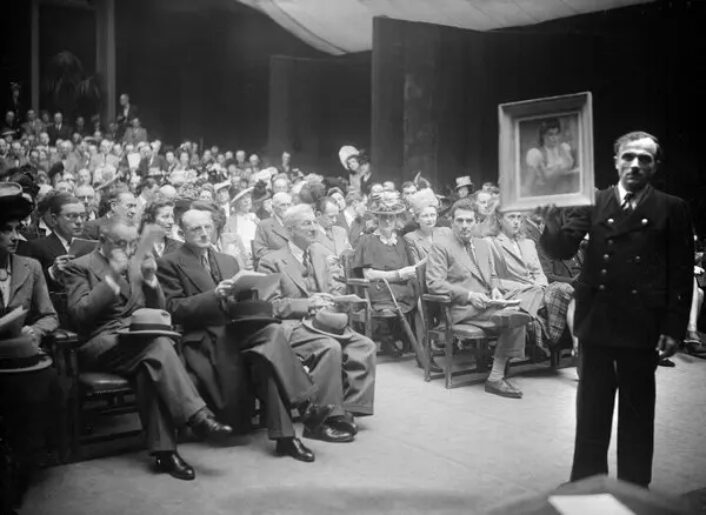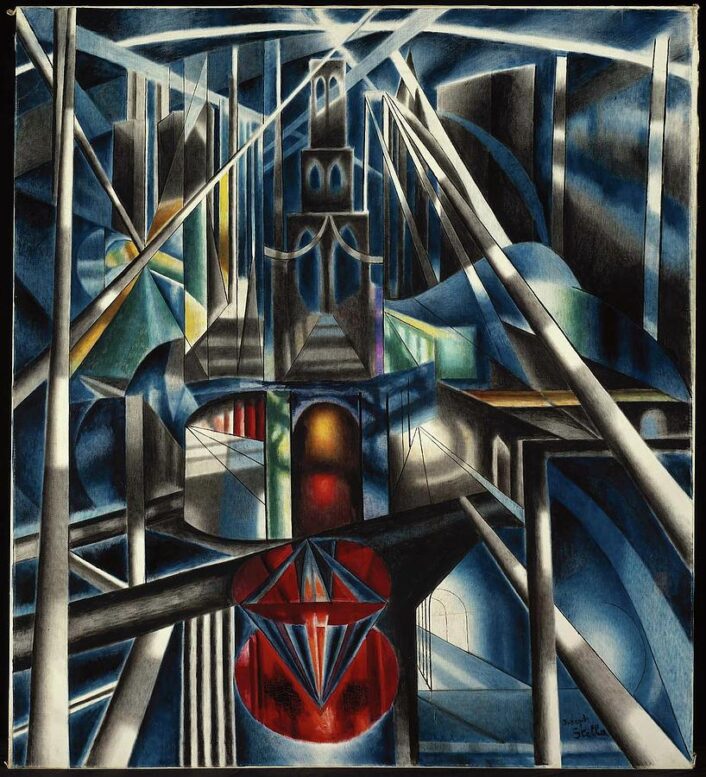Fine Art
The long history behind Franz Marc’s “Foxes”

“The Foxes” was painted in 1913.
Image courtesy of: ArtNet News
Earlier this month, the saga behind Franz Marc’s “The Foxes” finally came to a close. With a storied past, it seems as though the 1913 Expressionist painting will now reside in a legitimate place for the first time in many years. The importance of the oil painting lies in that it was created by Marc who is commonly considered to be one of the key figures of Germany’s Expressionist movement. Born in Munich, the young Marc was influenced by his father who was a landscape painter. Marc studied at the Academy of Fine Arts and then traveled to Paris where he was enthralled with Picasso, van Gogh, and Gauguin’s works.
However Marc was most impressed by a 1910 Matisse exhibition that he viewed in Paris. Interestingly, during this period the artist supported himself from animal-anatomy lessons he gave to other artists. Marc died at the young age of 36; sadly during his short career, he only produced 120 pieces of artwork. From that small umber, the collection of Foxes are among his most famous.
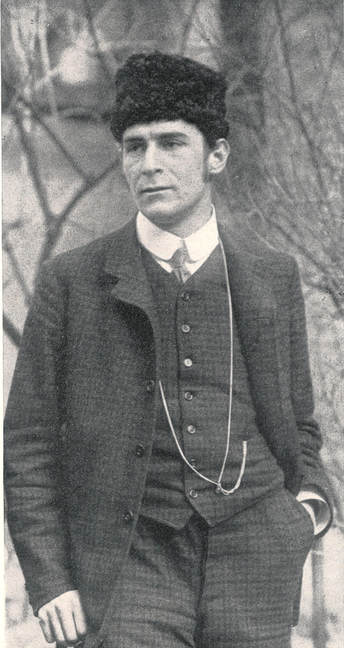
Franz Marc died as a solider in World War I at the age of 36.
Image courtesy of: Jessica Grimm
“The Foxes” was owned by Kurt and Else Grawi, a Jewish banker and his wife. The pair purchased the painting in 1928 from Max Leon Flemming, a businessman and art patron based in Hamburg. In November 1938, Grawi was arrested during Kristallnacht… a date that signaled an awful turning point against the Jewish population of Germany with a wide-ranging pogrom instituted by the rising Nazi regime. Following his imprisonment, Grawi fled to Chile.
Records indicate that Grawi relied on friends to fund his escape from Brussels to Chile. In a letter written later that same year, Grawi wrote that he smuggled the painting to Paris and planned to ship it onward to New York where (courtesy of The Art Newspaper), “the result of the sale will provide the basis for our emigration.”
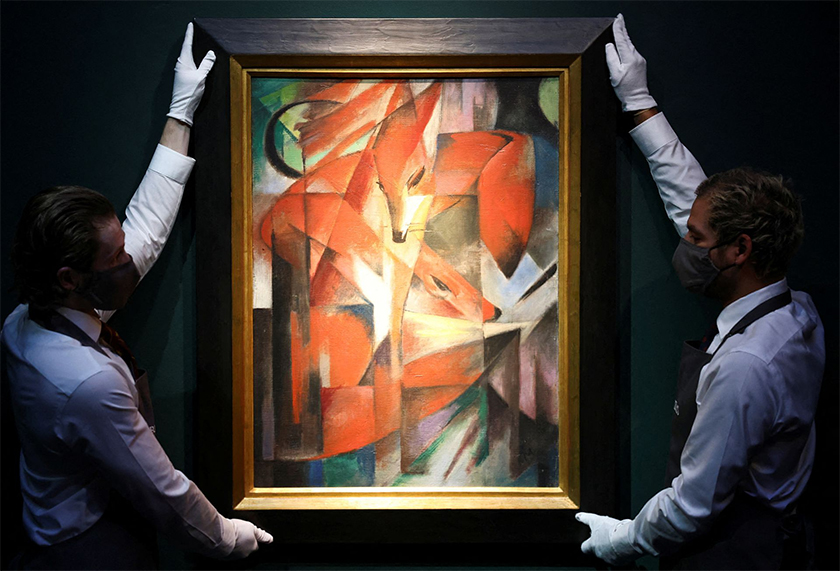
“The Foxes” being prepped for the March 2022 Christie’s auction in London.
Image courtesy of: Reuters, photographed by: Henry Nicholls
In trying to sell the painting, Grawi approached the Museum of Modern Art in New York; however, he declined the museum’s offer. The 1939 letter referencing this states, “the owner of this painting is a German refugee who is trying to obtain some cash (of) which he is in dire need.” Soon thereafter, Grawi sold the painting to William Dieterle, a German-American film director. The painting changed hands several times until 1960 when Helmut Horten, a department store owner and entrepreneur, gifted the painting to the Dusseldorf City Art Collection. As a result, Kunstpalast Art Museum was the “lucky” recipient.

William Dieterle, the German-American film director who purchased the painting from Grawi in 1940.
Image courtesy of: Wikipedia
For years, cultural officials in Dusseldorf argued that Grawi had in fact received a fair purchase price for the sale; thus, the sale could not be considered illegal “due to Nazi persecution.” Since Grawi’s heirs initially submitted a claim for restitution in 2015, there have been many discussions and recommendations by the Dusseldorf’s city assembly.
However this was not a “clear cut” case since it was not the case of art that was directly looted by the Nazis as so many previous cases have proven. Comparing a sale made under duress to escape a country is not necessarily the same as artwork looted by the Nazis. In 2021, the Limbach Commission was set up by the German government in order to investigate the return on artistic property seized as a result of Nazi persecution. The advisory committee recommended that the work be returned to its rightful heirs (unbelievably, three members did not vote for this decision). The ruling said, “even though the sale was completed outside the National Socialist sphere of influence, and, in the light of information currently available, the payment of a fair price and the opportunity for free disposal are plausible.”
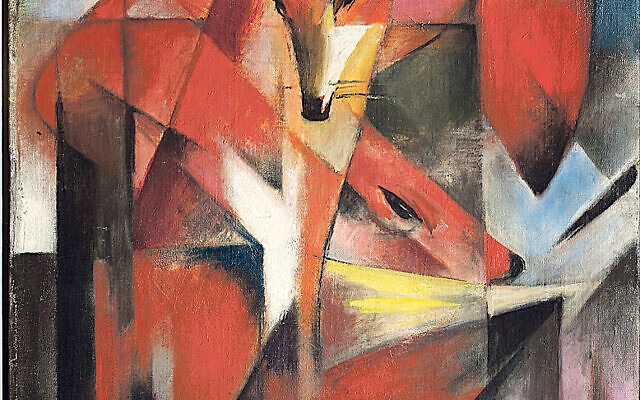
An up-close section of “The Foxes.” This painting so special is because Marc painted only 45 paintings in 1913.
Image courtesy of: Jewish News
The painting was returned to Grawi’s heirs in January 2022; they decided that they would put it on the “open market.” In February, prior to the auction, “The Foxes” traveled to viewings in both New York and Hong Kong; it returned to London just ahead of the auction house’s “20/21 Shanghai to London Sales Series,” an event that began in mainland China before culminating in London that same evening.
No doubt this painting will be (courtesy of Christie’s CEO Jussi Pylkkaenen for the Daily Mail), “This is a painting that will be chased by the world’s greatest collectors.” She continued, “‘The Foxes’ encapsulates everything that we find inspiring about Marc’s work; it has dynamism, sensational color, incredible balance and a spirituality in its sublime subject which completely draws the viewer into the painting. Aside from its unquestionable beauty, it is a work with an extraordinary history, both of ownership and of exhibitions, having featured in so many important avant-garde shows over the past 100 years.”
We love the way this story ended… and we know that “The Foxes” painting will now be able to rest beautifully in its rightful home.
